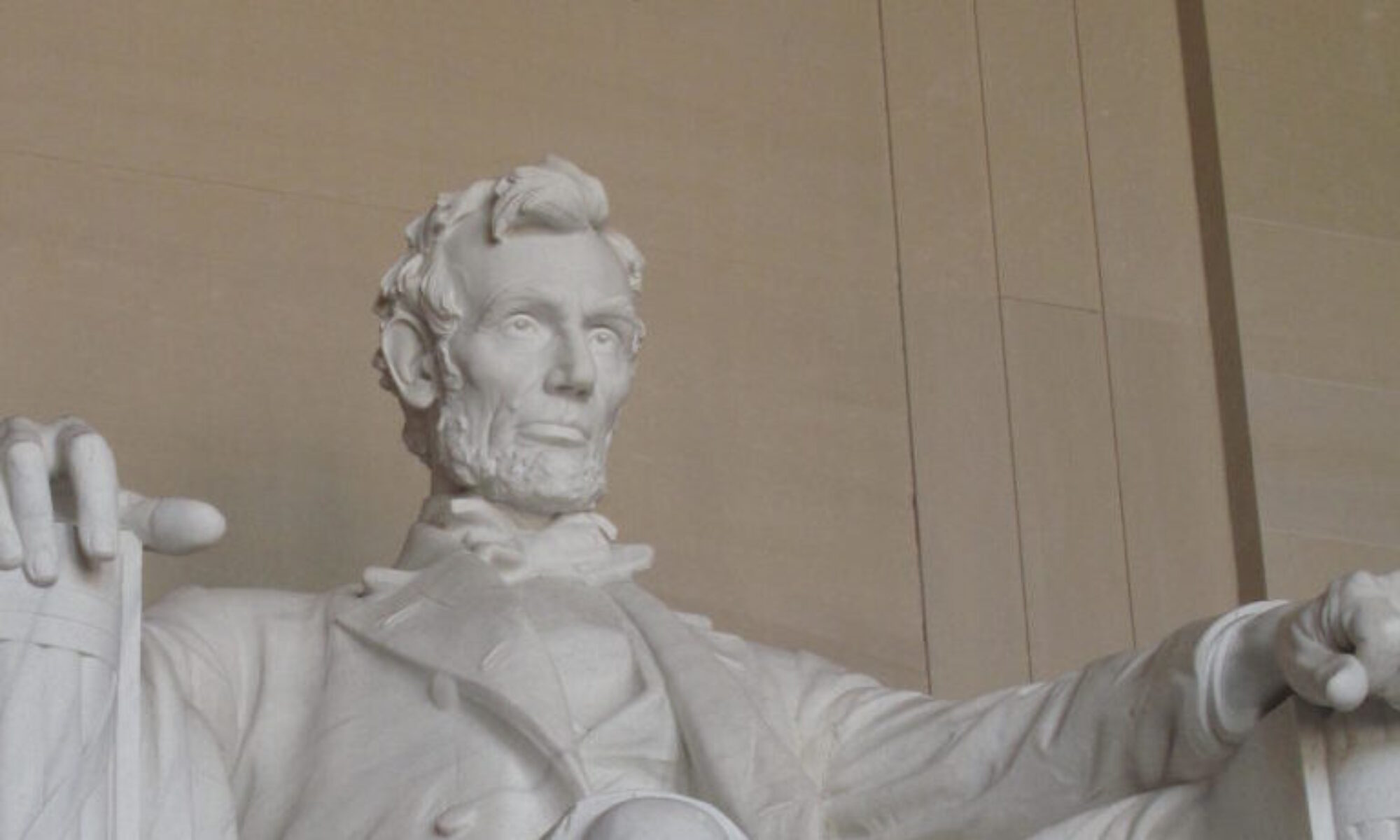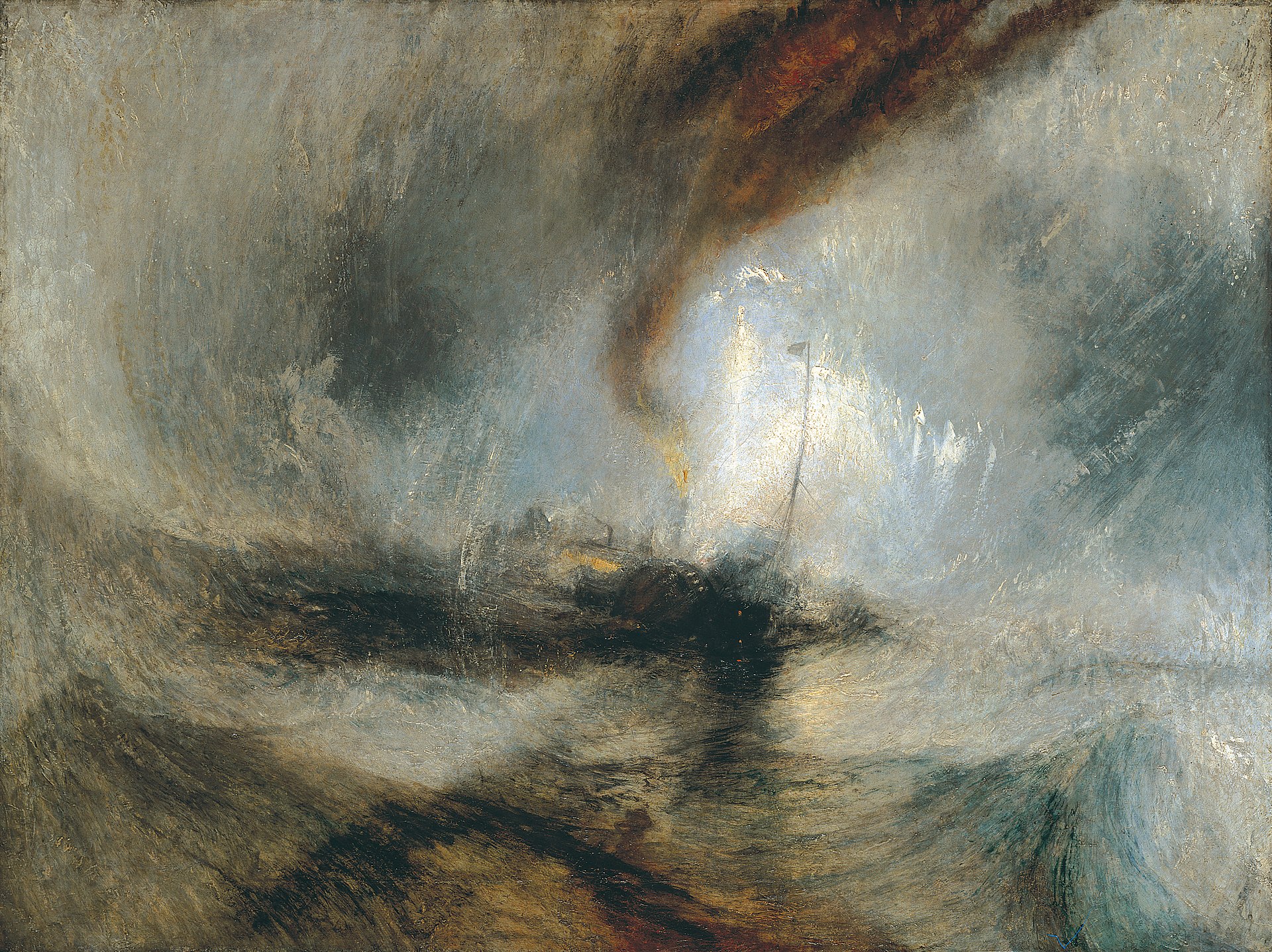
JMW Turner (1775-1851) lived the life of a radical genius. You know you are making an intense impression when two avowed art critics can look at your work , one critic seeing an artist that “most stirringly and truthfully measures the moods of nature“, the other that sees only “blots“. In 2016, I had the opportunity to visit the British Tate Museum in London and see Turner for myself, by the means he had requested his works to be seen — en masse in a comprehensive collection at a single site. Taken as a compendium of a lifetime of work, the radical genius shines through. As a collector of contemporary artists, it is no small coincidence that I am drawn to artists that acknowledge the foundational influence upon them of Turner’s unique color palate and his interpretation of the natural world as an unbounded sublimity.
Turner was born into a world of commoners and limited means, and he never rejected his birth circumstances, despite his fame at times reaching rockstar celebrity status. At every opportunity to set anchor in the quiet harbor of accepted technique and contemporary adulation, he sailed farther and farther out into unsafe, radical places. By the end of his life, his paintings bordered on swirling, indecipherable, impressionistic and existential art scape. He was happy to coexist in all intimations of the real, the ideal, and the surreal and make you as the observer uncomfortable in interpreting where the painting foundationally lived. Turner lived in very modern circumstances — a recluse, in non-traditional relationships, and combative academic worlds — but generally cared not a wit what others thought of his interpretation of his world. Regardless, his effect on art during his life and afterward was immense, and he remains a titan today.
JMW Turner typified the world of art that lived at the edge of Romanticism, the movement that returned to the concept of Nature as ungovernable and unconquerable, the modern rational, globalist world of the Enlightenment as antithetical to the individual’s need to absorb the sublime and emote in the language of feelings, rather than definitions. Turner saw Britain’s emergence in the 19th century as a dominant sea power as a perfect canvas for man’s intrepid spirit against the awesome power of nature. He repetitively told the apocryphal story that he had personally experienced his unique interpretations of nature’s chaos and color at sea by having requested himself to be lashed to a ship’s foremast in a violent storm. Whether that had ever truly occurred, his seascapes are embellished with rule breaking light, color, and chaos that suggest intimate knowledge of an unstable entanglement of water, wind, and foam in the deep ocean that speaks to a very personal, emotional viewpoint. Nature awesome scope and power is ever present, but man’s romantic need to risk all for a fulfilled life overlays the paintings.
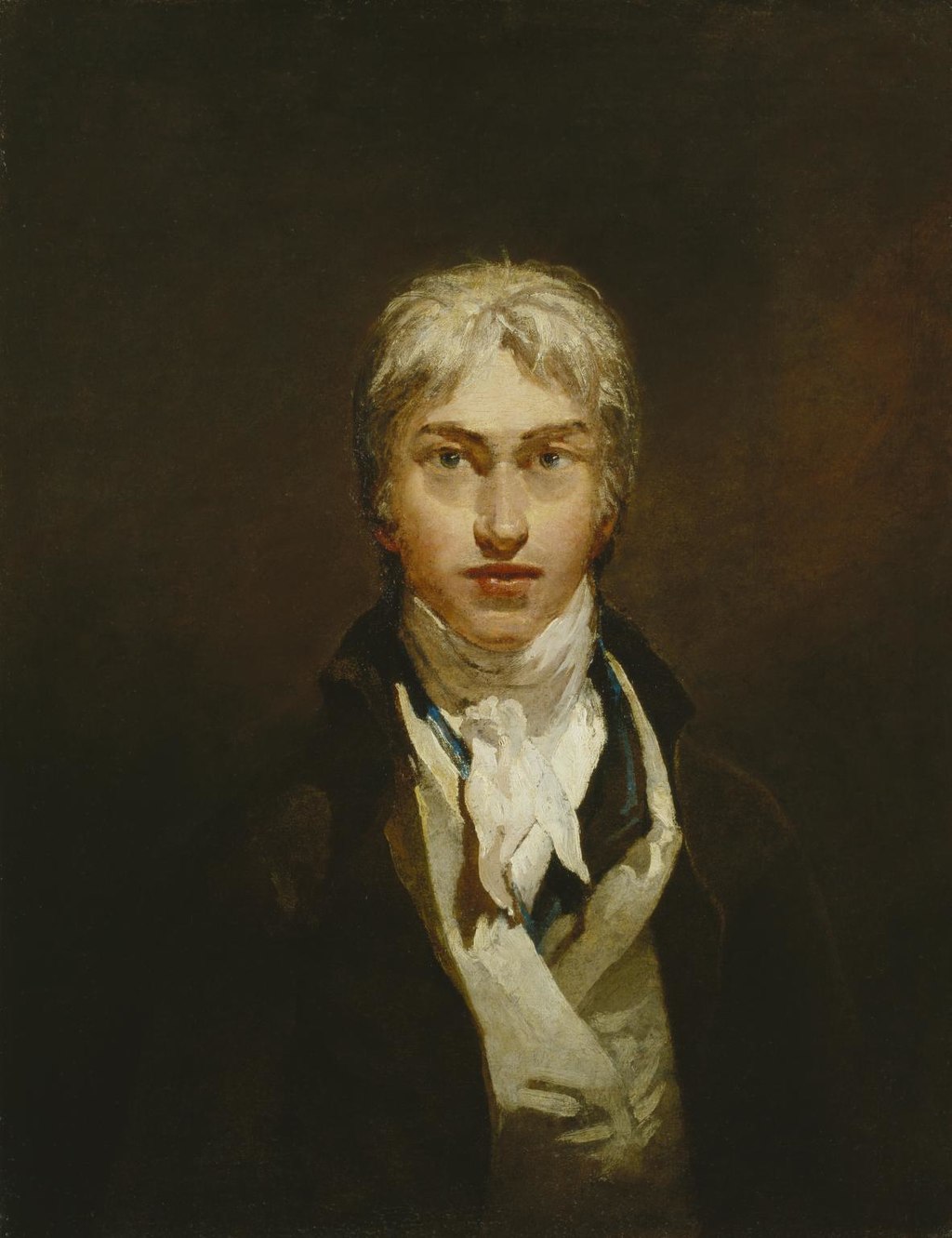
Turner’s confidence never wavered as an artist. It is seen in his idealized self portrait in his twenties. He looks out on the world as a young man that will be an oracle not a passive recorder of the world around him. A classic portrait technique of its time, turner manages to imbue the dash and confidence of youth in the manner of a much earlier portrait, Albrecht Durer’s confident 1494 gaze directly at the viewer, suggesting the talent ready to emerge and take on the larger world.
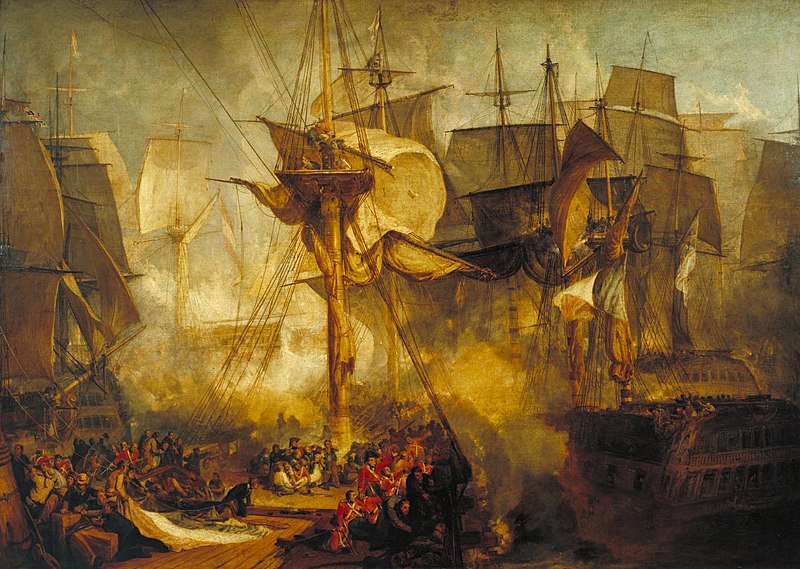
In the first decade of the 19th century, Turner’s ascension to prominence mirrored Britain’s own. Europe was under titanic siege on land with the indomitable armies of Napoleon, but on the ocean, Britain showed the rest of the world the Napoleon was not omnipotent. At Trafalgar in 1805, the British fleet led by Lord Nelson crushed the larger French fleet in a massive sea battle that ended any hopes of Napoleon subduing Britain in the manner he had the rest of the continent. Instead it elevated Nelson to iconic status, and inspired Turner to reimagine the historic sea painting. Turner’s Trafalgar reenacts the battle’s series of events in a simultaneous projection, increasing the sense of tension, chaos, smoke and opacity that suggests a very intimate reconstruction, despite the painting’s immense 8 by 12 foot scope. The colors have begun to ‘turnerize’ with the sky pewters and ambers coexisting with the dark sea and isolated shafts of light.
The destructive nature of the sea fit Turner’s view of the encroachment of industrialization on the restless impulse of nature to resist. Sea and sky are progressively intermingling and the desperate calamity is highlighted centrally in a shaft of light massing the powerful waves, the broken ship and the desperate survivors clinging to life in a single maelstrom. Soon Turner’s vision progressively loosened itself of the need for specific detail, and he brought increased contrast between hazy contrasts and impressions of light and dense crimsons and onyx of both objects and sky.
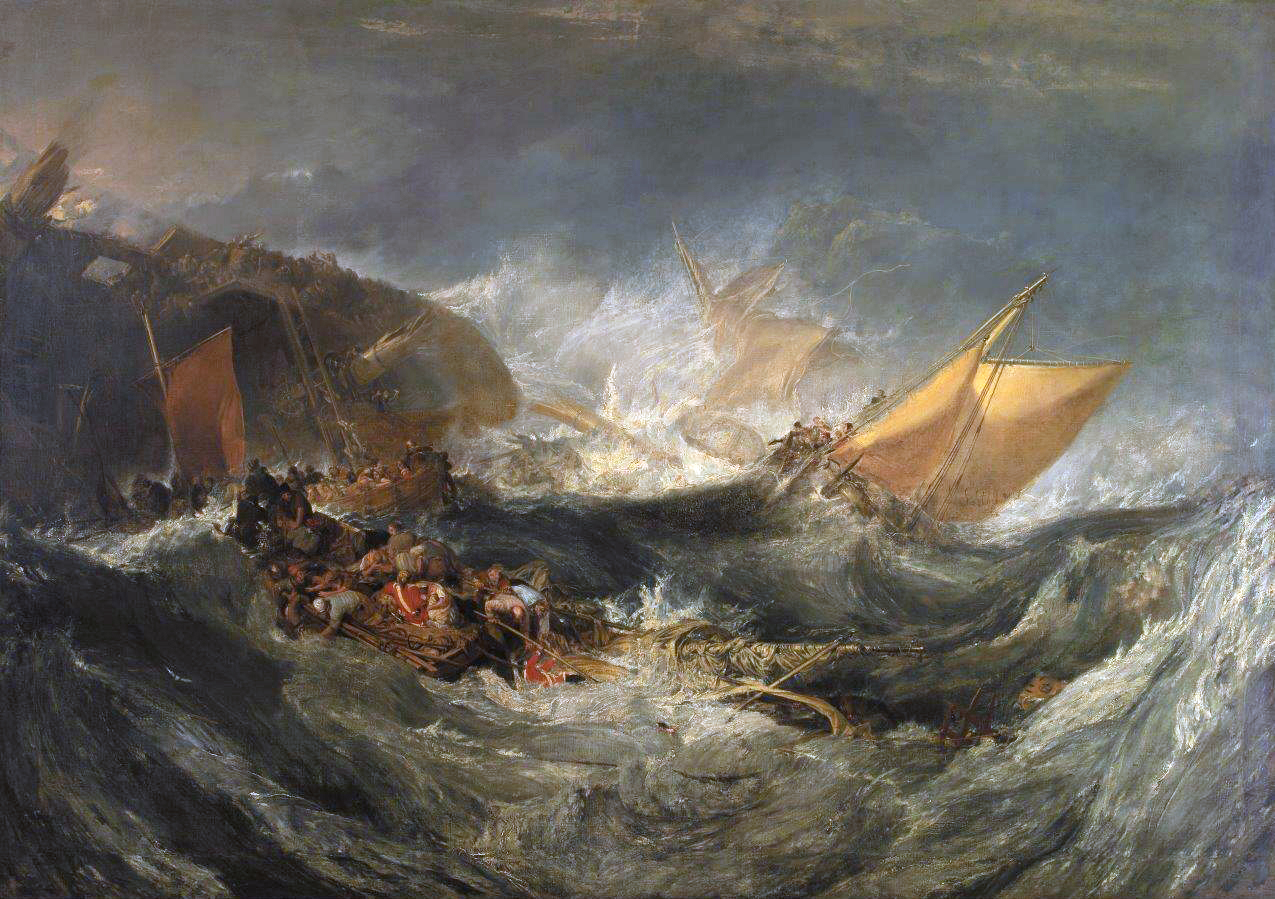
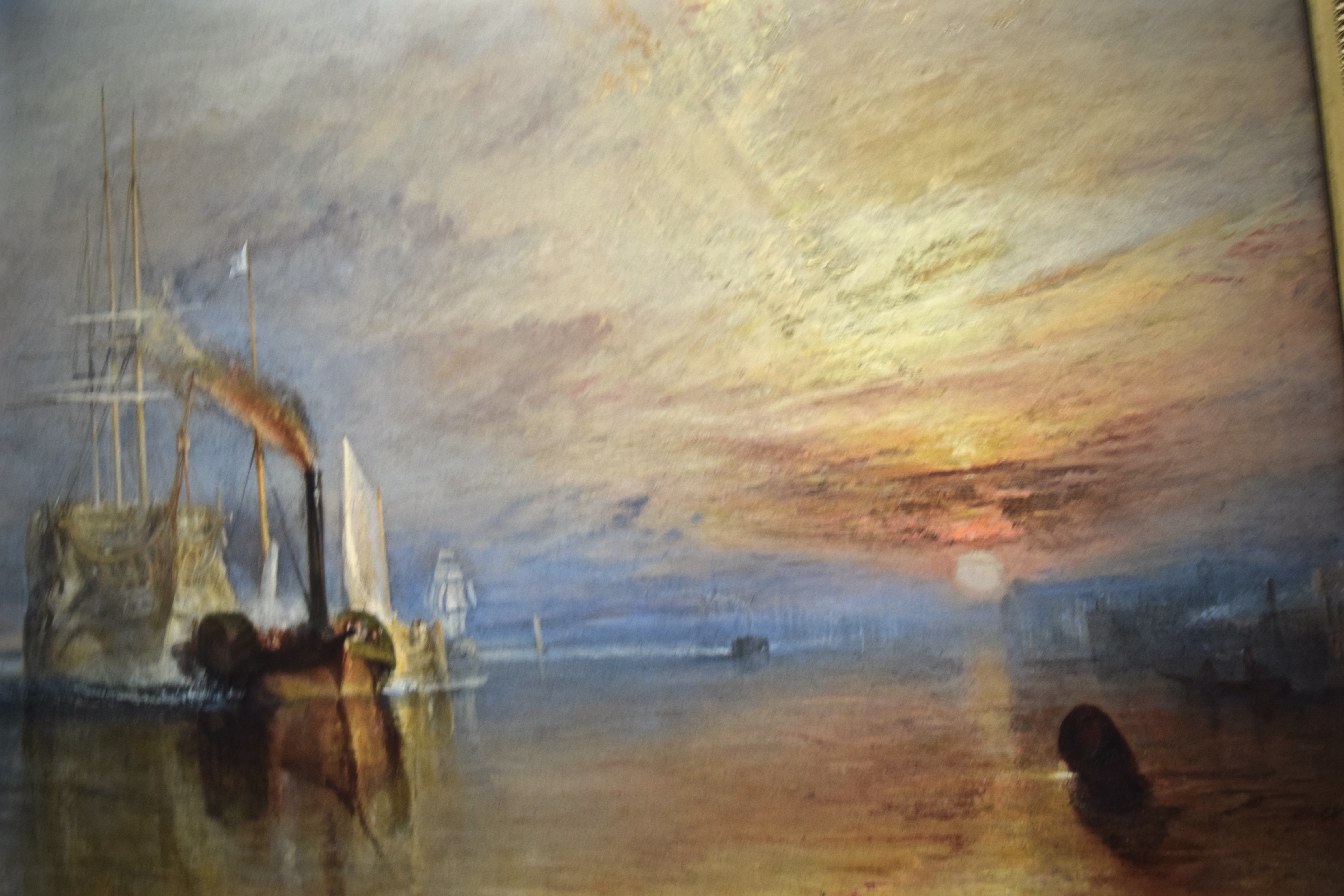
The final dissolution of form to the emotive quality of color and shade dominated the final projection of Turner’s art. As the art world held to an academy of proportion, realism and comfort, Turner pushed completely off into the surreal, where edge, form and content are sublimated to the evoked emotion as expressed in color and light, presaging the twentieth century before the nineteenth was half over. Paintings such as Rain Steam and Speed-the Great Western Railway and Snow Storm are glassy sheens of color in which form is sublimated to the creative impulse of the artist to the point of near irredeemability.
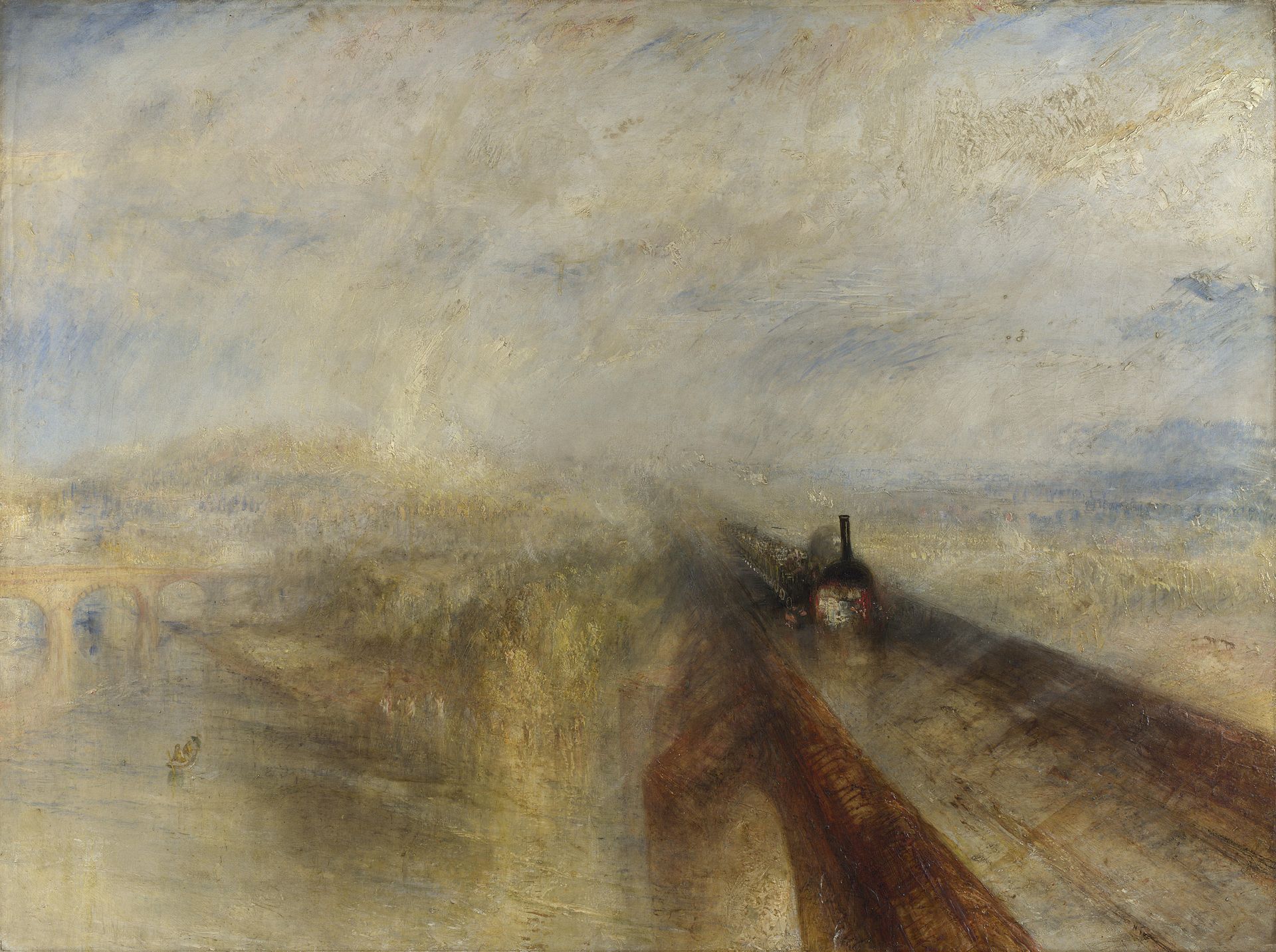
Rain Steam and Speed – Great Western Railway 1844
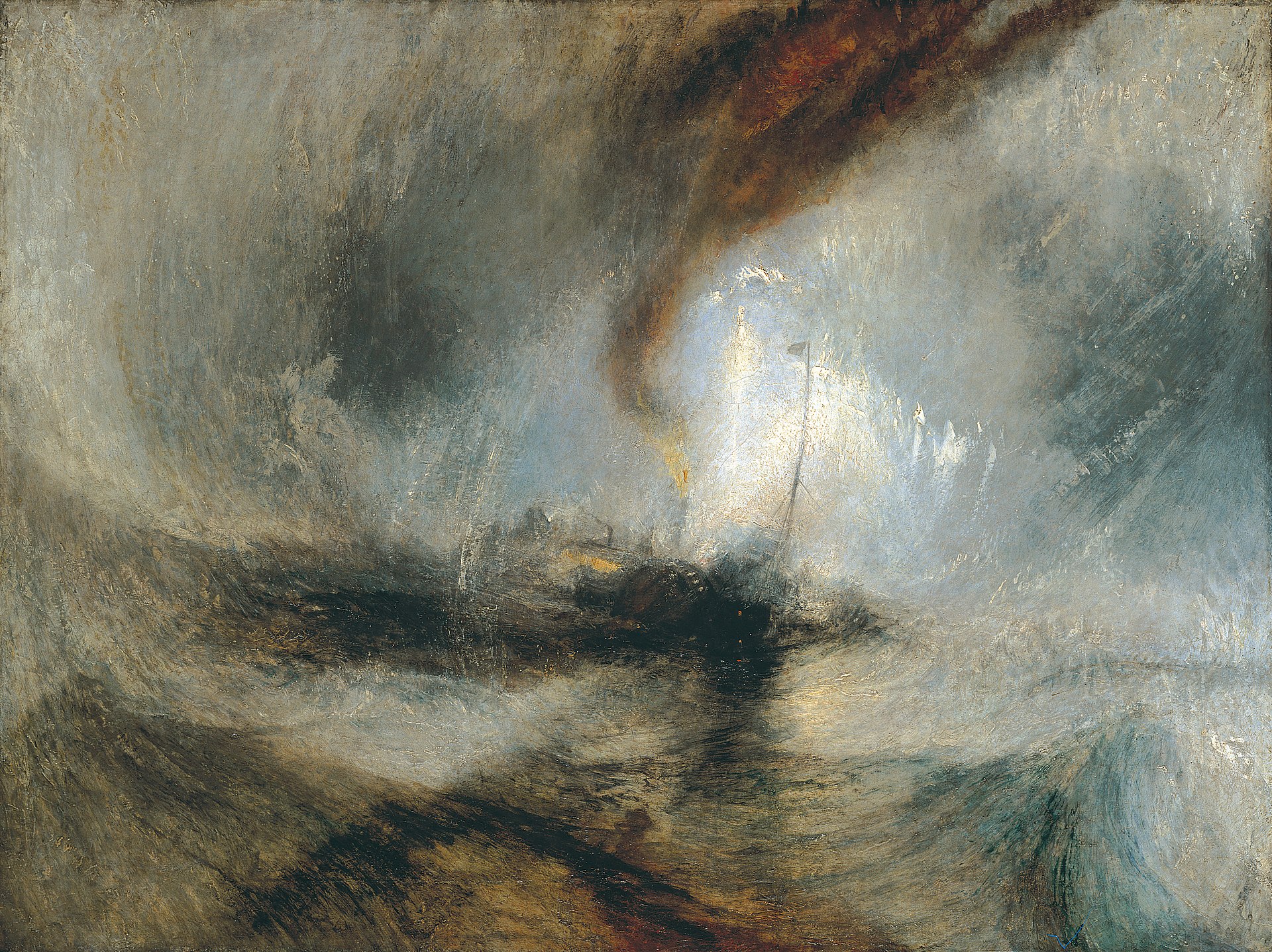
The over 2000 images that Turner created can not possibly be given justice in an essay of a few paragraphs and images. Needless to say the importance of Turner is reflected in the need to see more and more of the work to try to gauge the artist’s creative journey as an unbounded romantic in a world of assimilation. Turner, much like Beethoven is revered for what every succeeding artist thought they saw in his work, and the sense of having to answer to it artistically. The bountiful diversity of artistic expression ever since owes much of its confident willingness to test boundaries on Turner’s willingness to leave the safe course behind.
A trip to England for the art lover must leverage time for the Turner experience. Perhaps, you will never see the world quite the same way again.
